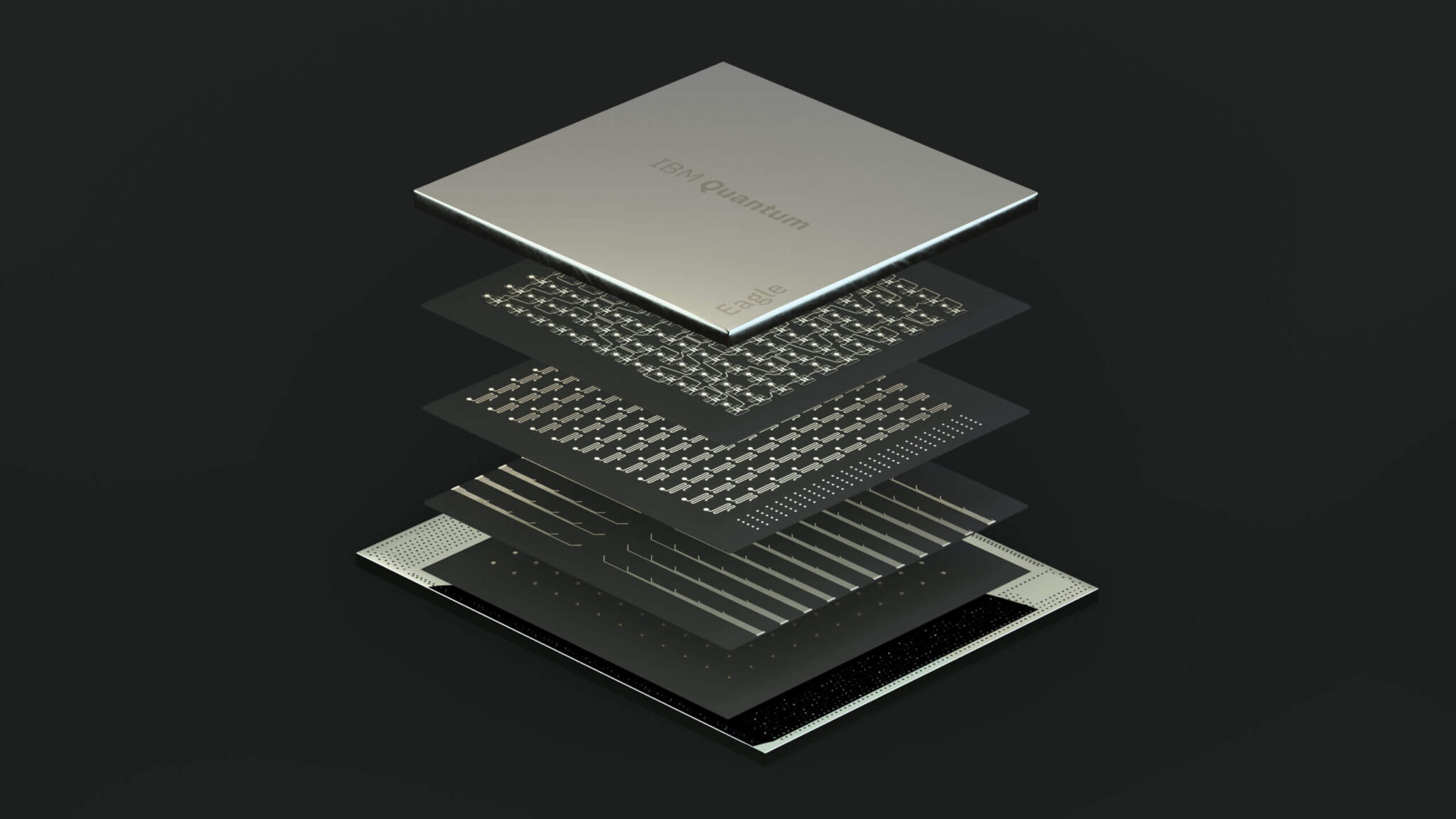The technology giant revealed for the first time a quantum processor with 127 qubits. The company says that this is the first processor whose performance cannot be imitated using classical computing. The number of bits that was needed for such an operation is greater than the number of atoms in all the people alive today

IBM announced a significant breakthrough in the field of quantum computing when it unveiled its new quantum processor, called Eagle and including 127 qubits (quantum bits). The processor sets a new record in utilizing the enormous computing potential of devices based on quantum physics
Eagle is IBM's first quantum processor to contain more than 100 active qubits. The achievement marks IBM's compliance with the roadmap for the development of quantum computing that it published last year. IBM's previous processor, Hummingbird was unveiled in 2020 and contained 65 qubits. A year before, the Falcon processor with 27 qubits was revealed. According to the roadmap, IBM plans to introduce a processor with 433 qubits (Osprey) and 1,121 qubits (Condor) next year.
The Eagle processor is IBM's first quantum processor whose performance cannot be imitated by classical computing. In fact, the number of classical bits needed to imitate the activity of an Eagle processor exceeds the number of atoms that make up the people living on Earth today - 7.5 billion people.
To achieve the current breakthrough, IBM researchers used a new three-dimensional architecture that places the qubits in one layer on the processor and the other components in a separate layer, a layout that allows increasing the number of qubits while maintaining a high level of performance. The large amount of qubits will allow users to explore problems at a new level of complexity when performing experiments and running applications, such as optimizing machine learning or modeling new molecules and materials for the pharmaceutical and energy industries.
"The development of the 'Eagle' processor is an important step towards the day when quantum computers will surpass classical computers for useful applications," said Dr. Dario Gil, vice president and director of IBM Research Laboratories. "Quantum computing has the power to change almost every sector and help us tackle the biggest problems of our time. This is why IBM continues to innovate quantum hardware and creates a global ecosystem necessary for the growth of a quantum industry."
The new processor was unveiled at the IBM Quantum Summit where the technology giant also presented its plans for the next generation of quantum computing systems - IBM Quantum System Two. In 2019, IBM unveiled the IBM Quantum System One, the world's first integrated quantum computing system. Since then, IBM has installed System One systems in a number of academic institutions and research institutes around the world - the Fraunhofer Institute in Germany, the University of Tokyo and the Cleveland Clinic in the USA. Now IBM is unveiling its future concept in the field of quantum computing systems: IBM Quantum System Two, designed to handle the company's next processors.
The IBM Quantum System Two design will combine a new generation of scalable qubit control electronics along with higher density components. Furthermore, IBM Quantum System Two features a new cooling platform, designed in conjunction with Bluefors, that features an innovative structural design to maximize the area for the support hardware required by larger processors. The IBM Quantum System Two prototype is expected to be operational in 2023.
More of the topic in Hayadan:
- IBM publishes a roadmap for quantum computing: a computer with more than a thousand qubits by 2023
- "The quantum computer will allow the computing industry to grow even after Moore's Law is stopped"
- Intel is testing silicon "spin qubits" for the realization of quantum computing
- IBM and the Fraunhofer Institute unveiled Europe's most powerful quantum computer
- "Quantum computing brings us to worlds that were impossible in classical computing"

5 תגובות
After listening to a professor's lecture, I came away more confused.
I didn't really understand what a qbit is? This really confuses me.
Is it a bit that can be in several states at the same time?
Or maybe it's a bit that with a certain probability it is in a certain state.
And if I watch him only then his state is determined (according to Schrödinger's cat thought experiment).
Do you measure the spin (direction of rotation) of the electron or something else?
How does this relate to single photon interference? Does the single photon go through a different slot each time
According to a certain probability or it goes through both slots at the same time.
Can someone briefly explain what is going on here?
Eli Isaac
Private tutor for assembler and computer science at an academic level
https://eisaak123.wixsite.com/privatelessons
IBM announces every few years the invention of a "revolutionary" processor to stay in the mind (I remember that Craig Bratt, the former president of Intel, laughed at this dramatic tendency of IBM)
In practice, when did you see a processor for purchase off the IBM shelf???
IBM announces every few years the invention of a "revolutionary" processor to stay in the mind (I remember that Craig Bratt, the former president of Intel, laughed at this dramatic tendency of IBM)
In practice, when did you see a processor for purchase from the IBM shelf???
"New materials for the pharmaceutical industry", lol, people still train for the "pharmaceutical" companies?
Those who are interested in reading a little more than IBM's announcement, which is mainly a pat on the back, are welcome to read:
https://scottaaronson.blog/?p=6111